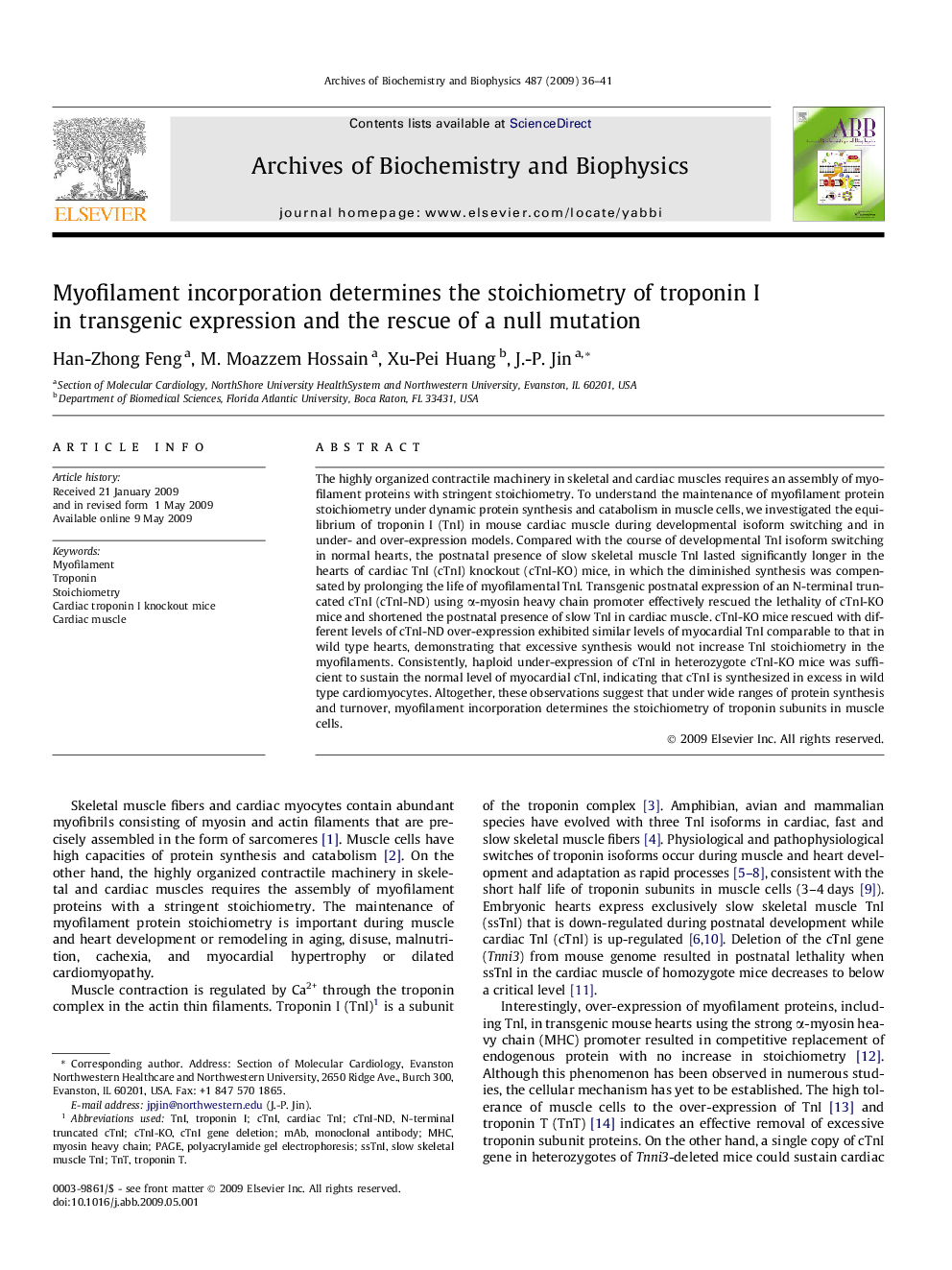| Article ID | Journal | Published Year | Pages | File Type |
|---|---|---|---|---|
| 1926310 | Archives of Biochemistry and Biophysics | 2009 | 6 Pages |
Abstract
The highly organized contractile machinery in skeletal and cardiac muscles requires an assembly of myofilament proteins with stringent stoichiometry. To understand the maintenance of myofilament protein stoichiometry under dynamic protein synthesis and catabolism in muscle cells, we investigated the equilibrium of troponin I (TnI) in mouse cardiac muscle during developmental isoform switching and in under- and over-expression models. Compared with the course of developmental TnI isoform switching in normal hearts, the postnatal presence of slow skeletal muscle TnI lasted significantly longer in the hearts of cardiac TnI (cTnI) knockout (cTnI-KO) mice, in which the diminished synthesis was compensated by prolonging the life of myofilamental TnI. Transgenic postnatal expression of an N-terminal truncated cTnI (cTnI-ND) using α-myosin heavy chain promoter effectively rescued the lethality of cTnI-KO mice and shortened the postnatal presence of slow TnI in cardiac muscle. cTnI-KO mice rescued with different levels of cTnI-ND over-expression exhibited similar levels of myocardial TnI comparable to that in wild type hearts, demonstrating that excessive synthesis would not increase TnI stoichiometry in the myofilaments. Consistently, haploid under-expression of cTnI in heterozygote cTnI-KO mice was sufficient to sustain the normal level of myocardial cTnI, indicating that cTnI is synthesized in excess in wild type cardiomyocytes. Altogether, these observations suggest that under wide ranges of protein synthesis and turnover, myofilament incorporation determines the stoichiometry of troponin subunits in muscle cells.
Related Topics
Life Sciences
Biochemistry, Genetics and Molecular Biology
Biochemistry
Authors
Han-Zhong Feng, M. Moazzem Hossain, Xu-Pei Huang, J.-P. Jin,
